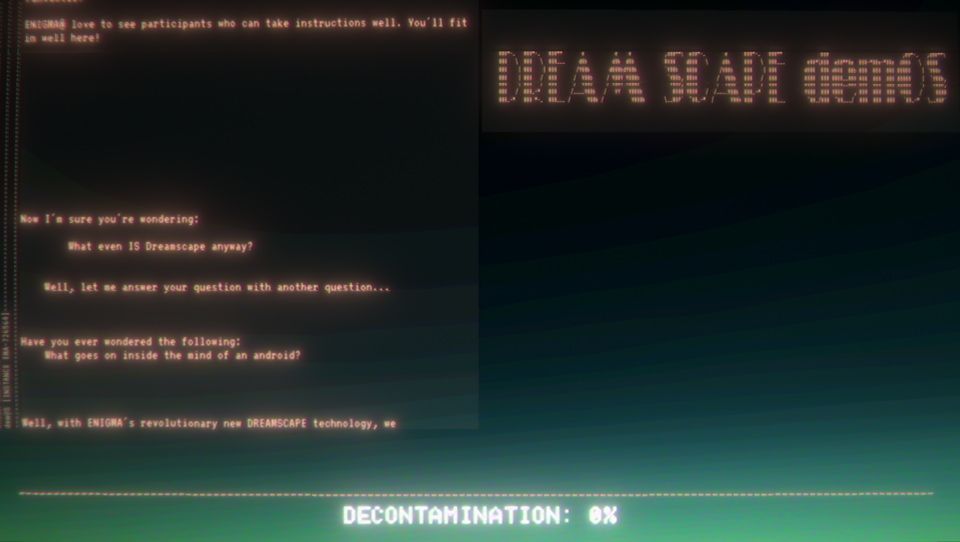THE ENIGMA MACHINE
by Jamie Gavin
Windows/Mac/$5/1 hour
"HAVE YOU EVER WONDERED WHAT GOES ON IN THE MIND OF AN ARTIFICIAL INTELLIGENCE?"
This one came recommended by the wonderful Notable Releases. It's at the crest of an incredibly strong wave of games coming out around now, in which the player interacts with a simulacrum of a computer inside their real computer. I guess there are games in that vein going back at least as far as Spycraft (1996) and Uplink (2006) but I think the modern genre starts with Christine Love's Digital (2010), a prescient work which owned this space for five years, at least until Her Story (2015) Emily Is Away (2015) and Cibele (2015) came out. So this has long been a theme in games, that is used to make the player reflect on their own role as the player of the game, in much the same way as the 'play within a play' is used in Hamlet. Some of the games have a 'cyberpunk' setting, but computers are no longer inherently cyberpunk, and neither are all of the games.

The last year or so has seen a sudden wave of games that use this device. I've written about Black Room (2017) and Subserial Network (2018) on this blog, but not A Normal Lost Phone (2017), Bury Me, My Love (2017), Don't Feed The Monkeys (2018), Macdows 95 (2018), Hypnospace Outlaw (2018), All Our Asias (2018), eCheese Zone (2018), or numerous games that we will most likely see next year. I don't think of it as a fad or a bandwagon, since all the games I just linked are interesting and use the device in their own unique way... but we might reasonably start to wonder what has brought on this sudden influx of games with the same narrative and mechanical frame.
Perhaps it is significant, in 2018, that the computer-within-a-computer embodies the designer of a game holding a mirror up to the player, asking them to reflect on exactly what it is they are doing when they are playing a game or operating a computer that is connected to a network.
ENIGMA MACHINE starts in a pretty normal videogame place — I'm talking to an artificial intelligence, visiting simulated spaces, solving some mild puzzles. But that rote cyberpunk framework is just the blank canvas that the real experience is painted on. Toward the end of it, the game produces some great surprises and ramps up into an intense synesthetic experience which I've had to take a break from because it was getting too intense.

I'm fascinated by the ways in which this wave of games understands the visual medium of simulated computers, of pixels on pixels. ENIGMA MACHINE, like some other recent games (Paratopic (2018) and OK/NORMAL (2018) and Giraffe Town (2018) all come to mind) presents its 3D spaces as PSX-on-CRT, and its textual spaces as MDA-on-P3 Phosphors, a visual anachronism that uses old display tech the way contemporary musicians use vintage synthesizers — to capture a futuristic vibe using an aesthetic of timelessness. Jesper Juul argues that indie games have used retro pixel-art aesthetics to capture a sense of (fake) authenticity and materiality, but these games are way past that—they intentionally violate the visual constraints that would provide that authenticity. To me, it's beautiful.
Anyway, maybe you're wondering why I'm linking to all these other games, if I'm trying to recommend THE ENIGMA MACHINE to you. It's because I'm trying to tell you that something is happening right now in games, like it's genuinely HAPPENING RIGHT NOW and maybe you are missing it, and I know that most of you are only going to play one of these things, at most. This one is dead center on the zeitgeist.
